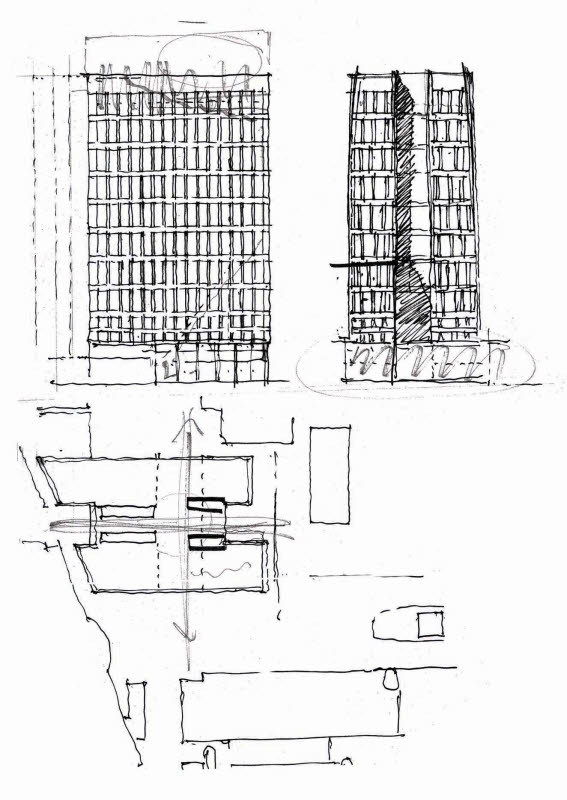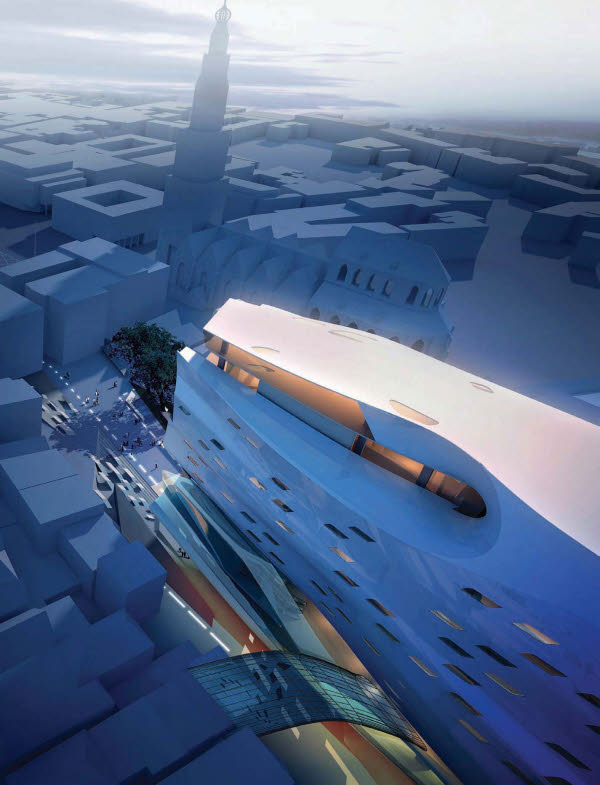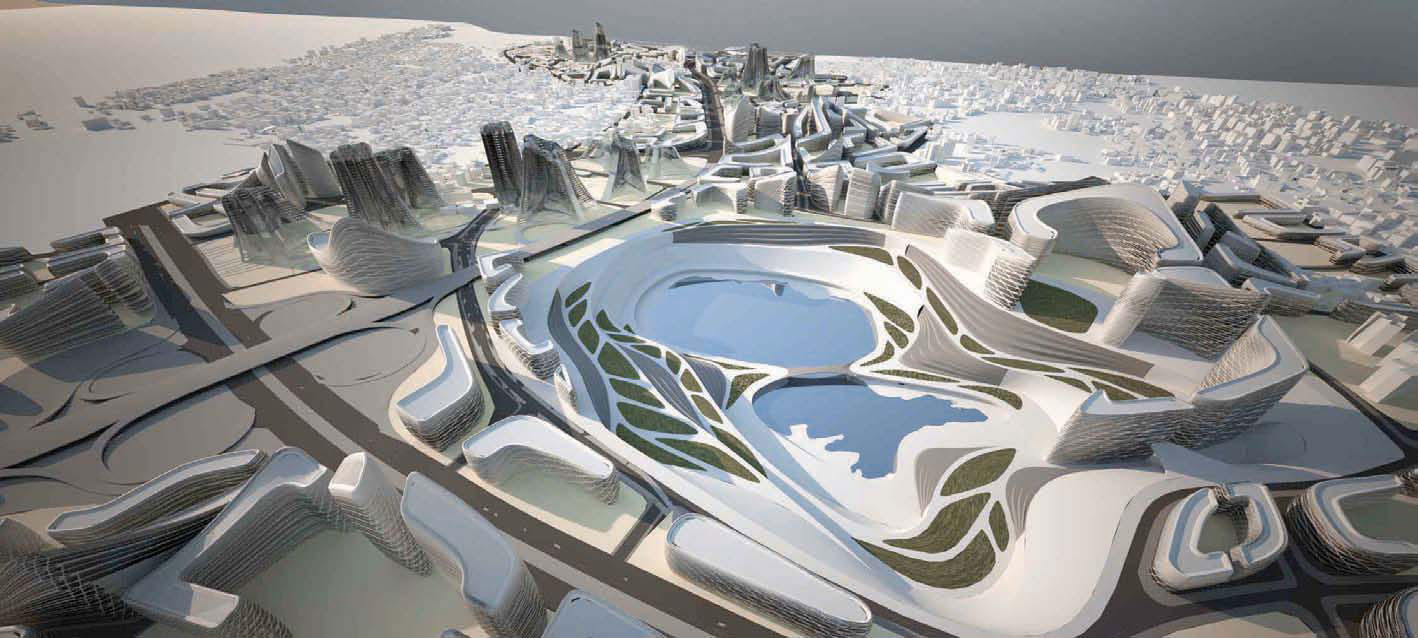
1
1. The first drawing featured here is about simple observation of the city and light by the artist Anne Desmet. The first, Matera towards Evening, is a lino-cut printed in blue-black and cream inks on Somerset Satin paper. This lino-cut is a direct development of a small, detailed, pencil and gray-wash drawing (made on site) of part of the ancient town of Matera, in southern Italy. The sun is just hitting the scene and the drawing emphasizes the way that buildings merge into the shadows, the rocks from which they came. Two printing blocks were used: the key block, printed in blue-black, carried all the structure of the composition; the second block (the same size as the first) was uncut, but inked in a transparent cream tone over the first printing in order to imbue the image with a sense of the yellow warmth of the stone and sunlight in contrast to the bright whiteness of the printing paper.
TIP URBAN SPACE

2
2. It is interesting how the hand-drawn sketch still remains a key tool with which to synthesize and articulate ideas, even in the complex environment of the contemporary city. This study by Eric Parry shows an urban plan and two elevations for 5 Aldermanbury Square in London. The pencil sketch establishes, at an early stage, preliminary ideas of strategic importance to the development—in plan, the idea of a generous public space linking urban spaces to either side of the building at ground floor. The scale of this is indicated in the base of the first elevation. On the second elevation another idea—the inward canting of the upper parts of the elevations which is key to the final project—first appears. This device reduces the impression of the scale of the building at street level. In this sense this simple sketch is a synthesis of ideas about the life and experience of the city with strategic and detailed decisions about form, arrangement and structure.

3
3. Zaha Hadid Architects, CAD image of the Groninger Forum, showing the proposed building in the context of the existing fabric. The effectiveness of the drawing is partly in the way it limits the use of color to highlight the proposal. The rest of the city is rendered in a blue/gray tone, and while giving the background context, it does not detract from the dramatic building that appears as a light plane cutting diagonally across the image from the bottom right. This composition and carefully judged play of light and movement are key to the power of the drawing.

4a

4b
4a, b. Zaha Hadid Architects, Kartal-Pendik masterplan, Istanbul (see also pages 102 and 119). This project began by weaving in and out of the existing fabric to create a soft grid that forms the generating plan for a three-dimensional developmental framework (right). Topologies were developed through scripting software that responded to the perceived demands of different districts. The masterplan image (above) was made by taking this adaptable model and rendering it using a range of software including Rhino, Autodesk, and Maya.
